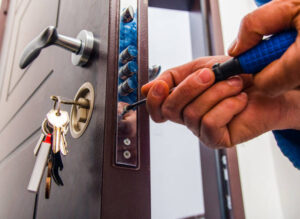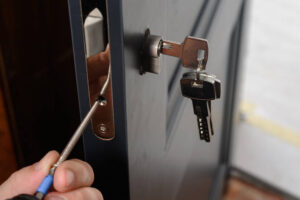
In hospitals, emergencies can happen at any moment. Whether it is a sudden influx of patients, an outbreak of infection, or a power failure, staff must be prepared to respond quickly and effectively. Communication is one of the most important parts of emergency management, and surprisingly, one of the most useful tools is the double sided magnet.
Often used as an indicator magnet, this simple tool provides instant, visible signals that help doctors, nurses, and hospital teams act without hesitation. When time is critical, the speed and clarity of communication can save lives.
Why Emergency Preparedness Matters in Hospitals
Hospitals are designed to handle emergencies, but preparedness is more than just having the right equipment. It also depends on clear communication, coordination, and quick decision-making. A mistake caused by miscommunication can delay treatment or put lives at risk. This is where the double sided magnet proves to be a reliable and cost-effective tool.
What is a Double Sided Magnet?
A double sided magnet is usually designed with two colors:
- Red side: Signals danger, occupied, restricted, or unsafe to enter.
- Green side: Indicates safe, available, or ready for use.
This universal color system makes it easy for hospital staff to communicate instantly during high-pressure situations.
How Double Sided Magnets Support Emergency Preparedness
1. Rapid Room Status Updates
During emergencies, patient rooms need to be filled and cleared quickly. A double sided magnet outside a room door instantly shows if it is occupied, requires cleaning, or is ready for new patients. This reduces confusion and speeds up patient placement.
2. Operating Theatre Emergencies
In critical situations where surgeries are scheduled back-to-back, magnets provide clear signals to show if an operating theatre is in use or ready. This prevents delays and ensures surgical teams move efficiently.
3. Equipment Readiness During Crises
Ventilators, defibrillators, and diagnostic machines must be ready for emergency use. An indicator magnet placed on each device shows whether it is available or under maintenance. Staff can quickly identify working machines without wasting time.
4. Infection Control During Outbreaks
In cases like COVID-19 or hospital-acquired infections, controlling entry to isolation rooms is vital. A red magnet signals restricted access, while green indicates the room is disinfected and safe. This supports infection control protocols during emergencies.
5. Evacuation Protocols
If a hospital must be evacuated due to fire or power failure, double sided magnets can help staff mark cleared or occupied rooms. This ensures no patient is left behind and speeds up coordination.
Benefits of Double Sided Magnets in Emergency Scenarios
- Speed: Provides instant visual communication.
- Clarity: No need for lengthy explanations; colors are universal.
- Cost-Effective: Inexpensive compared to digital alert systems.
- Reliability: Always works, even if power or technology fails.
- Versatility: Can be used on rooms, equipment, or whiteboards.
Double Sided Magnets vs. Digital Emergency Systems
Many hospitals rely on digital systems for emergency communication. While useful, they can fail during power outages or technical problems. A double sided magnet is a reliable backup, always visible and functional. It works even in low-resource settings, making it a must-have tool alongside modern systems.
Real Example of Magnet Use in Emergencies
A hospital in a busy city faced challenges during an influenza outbreak. Staff struggled to manage room availability and equipment use quickly enough. By introducing indicator magnets on room doors and machines, communication improved instantly. Patient flow became faster, and infection control measures were better enforced. What seemed like a small change had a big impact on the hospital’s emergency response.
Best Practices for Using Double Sided Magnets in Emergencies
- Train All Staff: Every team member should know what red and green mean.
- Standardize Across Hospital: Use the same system in every department.
- Place at Eye Level: Ensure magnets are visible to staff and visitors.
- Include in Emergency Protocols: Make magnet use part of official procedures.
- Check Regularly: Supervisors should confirm magnets reflect the correct status.
Why Hospitals Should Not Overlook Simple Tools
While technology is valuable, emergencies require reliability. A double sided magnet is low-tech but highly effective. It ensures hospitals remain functional even when complex systems fail. By integrating magnets into emergency planning, hospitals can achieve faster responses and save lives.
FAQs About Double Sided Magnets for Emergencies
- How do double sided magnets help during hospital emergencies?
They provide quick visual signals for room status, equipment readiness, and restricted access, saving valuable time. - Can indicator magnets be used in evacuation situations?
Yes, they help staff mark cleared or occupied rooms during patient evacuations. - Do magnets replace digital emergency systems?
Not completely, but they serve as a reliable backup if digital systems fail. - Are magnets useful for infection control during outbreaks?
Yes, red can show restricted rooms, while green signals disinfected and safe areas. - Why are magnets better in emergencies than other methods?
They are simple, cost-effective, always visible, and work even without power or technology.
Conclusion
Emergencies in hospitals demand speed, clarity, and reliable communication. The double sided magnet may seem simple, but as an indicator magnet, it plays a critical role in emergency preparedness. From patient rooms to medical equipment, it provides instant signals that help staff respond quickly and effectively. In moments where every second matters, this small tool can make a life-saving difference.




